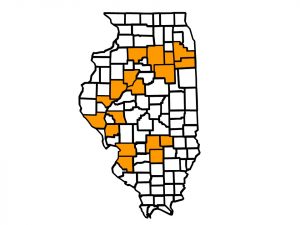Make Sure You Know ALL the Changes for 2021 Dicamba Applications in Soybean
In late October 2020, the United States Environmental Protection Agency (US EPA) announced new five-year registrations for the dicamba-containing products XtendiMax, Engenia and Tavium. These labels include new and/or additional application restrictions that were not included on previous labels. Annual dicamba-specific training (which we hope begins soon) offered by the product registrants will undoubtedly cover many/all of the new label changes, but there are a few changes that some currently might not be aware of and might come as a bit of a surprise. This is not an exhaustive list of label changes and we remind you that applicators are responsible for adhering to all aspects of the label instructions, including keeping detailed records of each application.
*The product labels allow applications only in dicamba-resistant soybean and cotton. Other previously labeled crops, such as corn, no longer appear on the new labels.
*The State of Illinois approved the federal labels in December 2020 while simultaneously announcing the State will pursue additional restrictions to the new labels similar to the restrictions implemented in 2020, including a June 20 application deadline and prohibiting applications if the actual or forecast air temperature exceeds 85 degrees.
*Prior to application, applicators must consult and follow the measures contained in the Endangered Species Protection Bulletin (https://www.epa.gov/endangered-species/bulletins-live-two-view-bulletins) for the county in which an application will occur. We recently noticed there have been many changes to the list of Illinois counties on the US EPA Endangered Species Protection Bulletin compared with previous years. The 2019 list included 27 Illinois counties, whereas only 18 counties appear in 2021 (Figure 1). Fourteen Illinois counties listed in 2019 are not listed in 2021, but five Illinois counties not previously listed are now listed in 2021 (Grundy, Kankakee, Livingston, Effingham and Marion).
*Differences in the downwind buffer requirements also have changed. In counties not listed as endangered species counites, all applications must include an in-field downwind buffer of at least 240 feet. Applications made in counties not listed as endangered species counties may include corn, dicamba-tolerant cotton, dicamba-tolerant soybean, sorghum, proso millet, small grains, sugarcane, and other crops for which dicamba has a post-emergent approved use in the buffer distance calculation in addition to the other areas (ex., unplanted fields, paved roads, etc) listed on the product label. Applications made in counties with endangered species also must include a 57-foot omnidirectional buffer and a 310-foot (i.e., greater distance than in 2020) downwind buffer. A major change we noticed in the directions on the Endangered Species Protection Bulletin is dicamba-resistant soybean or cotton are the only crops that may be included in the buffer distance composition in counties with endangered species (i.e., cornfields cannot be included in the distance composition). There are some exceptions in all counties on the size of the downwind buffers if the applicator uses a hooded sprayer, but in all cases a downwind buffer is still required.
Figure 1. Illinois counties (shaded) containing endangered species according to the 2021 US EPA Endangered Species Protection Bulletin.






